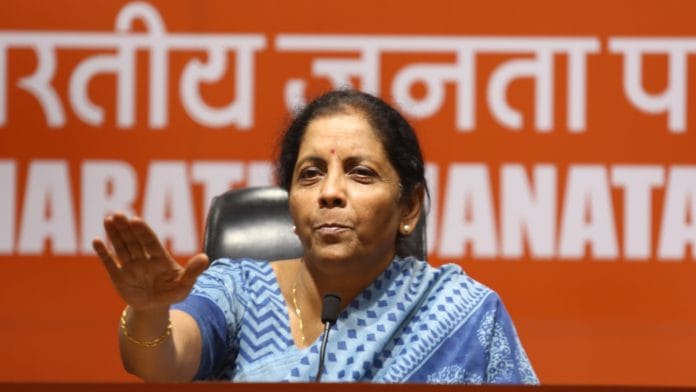New Delhi: As India’s Finance Minister Nirmala Sitharaman prepares to deliver her maiden budget speech Friday, her appointment re-establishes a recent global trend of more women taking up economic leadership roles.
This is in stark contrast with the past when not only were there very few women in such pivotal roles, but the general field of economics also had very few women.
ThePrint dives into the historical role of Indian women in economics and the recent trend of more number of women taking up leadership roles in the field of economy across the world.
Indira Gandhi — world’s third woman finance minister
While India has produced its fair share of renowned female economists, it actually took the lead in having a woman take up the top economic policy role way back in 1960s.
Former prime minister Indira Gandhi was the country’s first woman finance minister. During her second term, Gandhi helmed the finance ministry as an additional portfolio from 1969 to 1970.
A lesser-known fact is that she was the third woman in the world who became a country’s finance minister.
Before Gandhi, only the Soviet Union had seen two women finance ministers between 1930 and 1940s — making Gandhi the first democratically-elected finance minister.
Gandhi had delivered her first and only budget speech in 1970.
Having launched her popular slogan of ‘garibi hatao’, the 1970 budget introduced massive welfare spending programmes — effectively pushing India from a revenue-surplus to a revenue-deficit economy.
“…It is necessary to devise policies which reconcile the imperatives of growth with concern for the well-being of the needy and the poor. Measures have to be devised which, while providing welfare, also add momentum to productive forces,” Gandhi had said during her budget speech.
Also read: Budget 2019: India has a law to cap fiscal deficit but UPA and NDA couldn’t care less
India’s long-list of talented female economists
Earlier this year, there was a lot of excitement across the country when Indian-American economist Gita Gopinath joined the International Monetary Fund (IMF) as its first woman chief economist.
Over the past several decades, India has produced several women economists who have made profound contributions to the study of the Indian and the world economy.
In a column in Mint, economist Niranjan Rajadhyaksha provides a comprehensive list of India’s women economists and their contributions to the field.
Some of the India’s pioneering post-Independence women economists are Dharma Kumar, first woman to join the Reserve Bank of India, Padma Desai, who co-wrote the seminal 1970 book ‘Planning for Industrialisation’ with economist Jagdish Bhagwati, and more recently, Bina Agarwal — who has conducted seminal research on land rights for women.
Few women study economics
Historically, there has been an acute lack of women’s representation in economic leadership roles and also in the field of economics.
For instance, so far, Elinor Ostrom remains the only woman to receive a Nobel Prize for economics.
Even today, only one third of undergraduate economics students across the US, Australia and the UK are women.
In the wake of such a small number of women taking up economics as a subject, it remains a fundamental problem in boosting women representation in this field.
Also read: Finance Minister Nirmala Sitharaman is new to the job – but faces age-old problems
Some encouraging trends
This lack of women’s representation has been so entrenched that it is a daunting task to reverse this paradigm. But recently, there have been some encouraging trends.
Although the number of women enrolling to study economics hasn’t seen a dramatic increase, a more top-down change is underway.
On a fundamental level, in a survey of 65 countries, the share of women economists has gone up from 7.2 per cent in 1973 to 28.4 per cent in 2018. This includes all the published economists.
India ranked slightly below the global average — where 26 per cent of its total economists were women.
But, some of the most significant shifts are visible in the fact that there is an increase in the number of women taking up top economic leadership roles across countries and in important international institutions.
Currently, there are 16 incumbent women finance ministers across the world. These include some major global economies such as Indonesia, Spain, Nigeria and India. Although the number is still small, this is a significant improvement from the past.
Important international institutions such as the IMF, World Bank and various central banks have also witnessed an increase in the number of women appointments.
Christine Lagarde, the current IMF managing director, is set to become the first woman to head the European Central Bank.
Other women economists who have recently taken up top positions include Laurence Bonne as the Chief Economist of Organisation for Economic Co-operation and Development, Kristalina Georgieva as the Chief Executive of World Bank and Pinelopi Koujianou Goldberg as the Chief Economist of World Bank.






